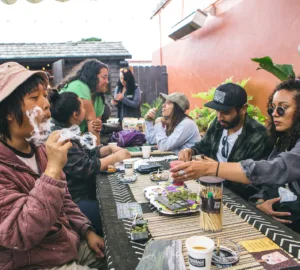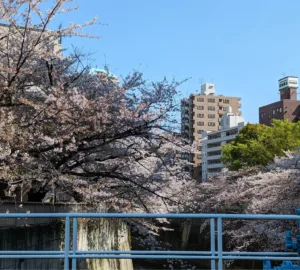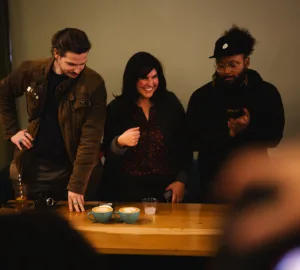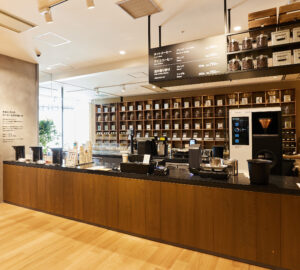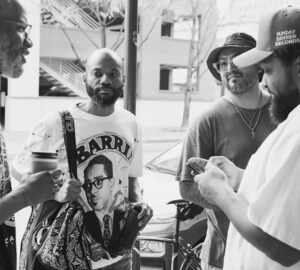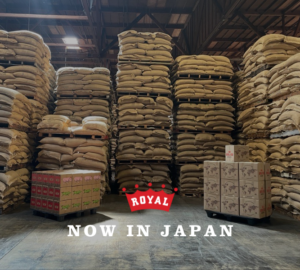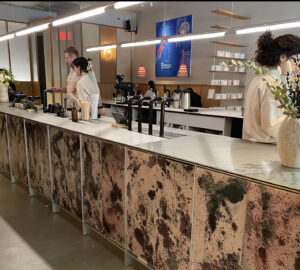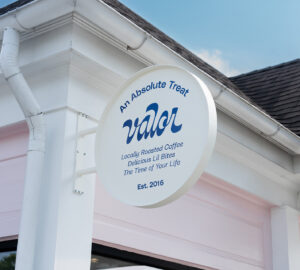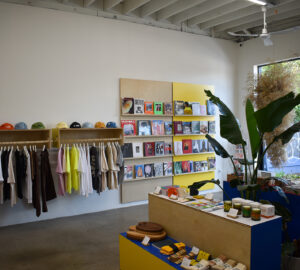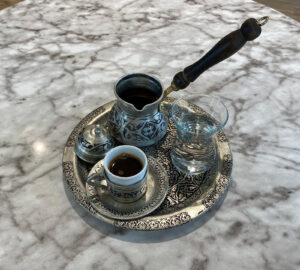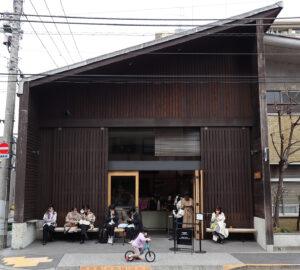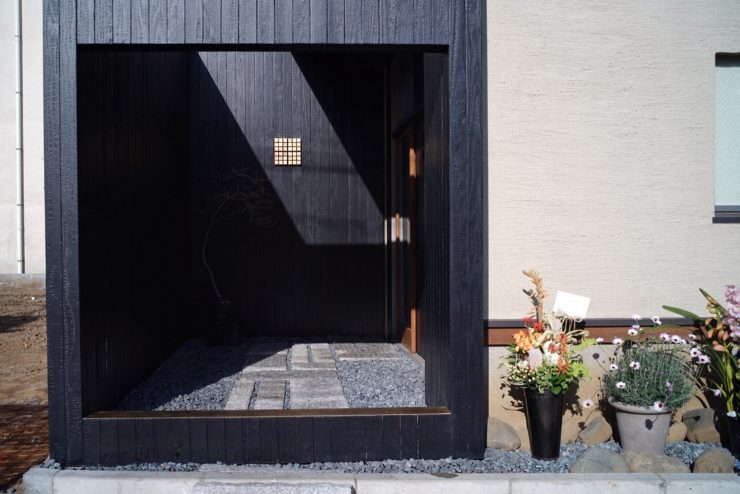 When Omotesando Koffee finally closed its doors in December of 2015, the building it called home was demolished. Soon after, another house went up in its place—perhaps lacking in the old-world charm of the original, but also stronger, sturdier, and less likely to collapse in on itself.
When Omotesando Koffee finally closed its doors in December of 2015, the building it called home was demolished. Soon after, another house went up in its place—perhaps lacking in the old-world charm of the original, but also stronger, sturdier, and less likely to collapse in on itself.
If you visit that residence now, you find an intriguing black square wrapped around one corner of it, with a neat stone path leading to 36 gold squares, and a sliding glass door.
Along this door read the words: Koffee Mameya.
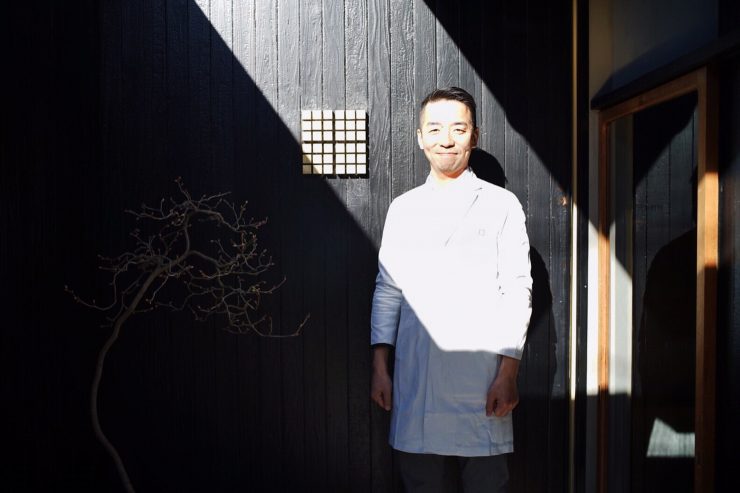
Owner Eiichi Kunitomo says, “The plan was always to rebuild here, where it all began.”
Past the glass door, Koffee Mameya is an exercise in simplicity: a plain wooden counter, concrete floors and walls, two baristas, and coffee beans lining the back wall in shades of brown and black.
The Koffee Mameya experience is designed around communication. There are no pictures on the walls, and no seats—there is only the customer, the barista, and the menu on the counter that brings them together.

“At Omotesando Koffee, we wanted to create an experience between customer and barista through a single, perfect cup of coffee,” says Kunitomo. “With Koffee Mameya, we want to share truly good coffees, and build relationships with customers that results in better coffee at home.”
But while Omotesando Koffee acted as a platform for the barista as craftsperson, Koffee Mameya looks at their potential next step. Though many baristas go on to roast themselves, Kunitomo sees his new project as an elevation of the barista’s role, turning her from a server of coffee into a kind of coffee sommelier.
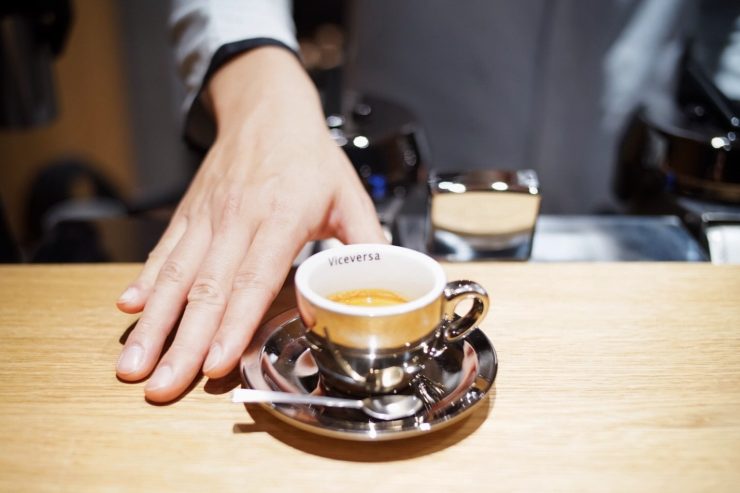
The goals of a barista at Koffee Mameya then, are two-fold—sharing coffee and sharing brewing methods. Baristas talk to customers, learn their preferences, and talk through flavors and brew methods with them before brewing coffee selections on the Kalita Wave or espresso machine.
This strong focus on communication is the reason Koffee Mameya doesn’t roast in-house. Instead, they work closely with a lineup of specialty roasters—The Cupping Room, Code Black Coffee, Bontain Coffee Company, Ogawa Coffee, and Tokado Coffee—and map each flavor profile across a map of 36 squares—the shop’s logo.
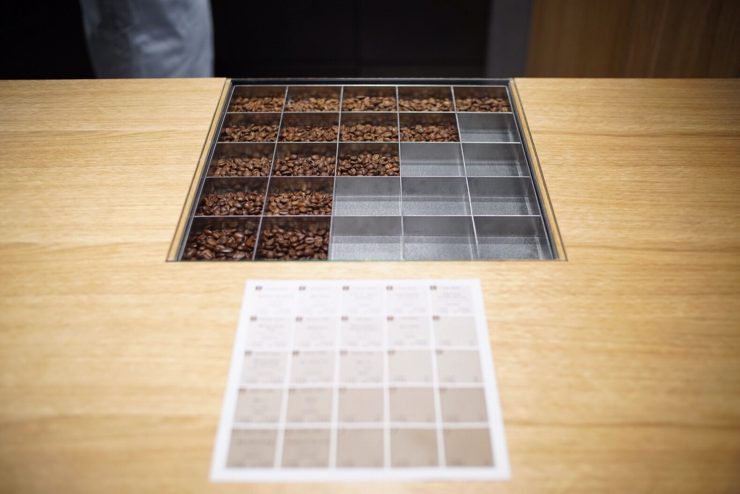
“We decided not to roast,” says Kunitomo. “We’re partnered with roasters who put their heart in their work, so our responsibility is to make sure their beans are thoroughly enjoyed. [Here in Japan] people often line up for beans from famous roasters or unique locations, but get home and, because of a few small errors, don’t like the coffee. That’s a real shame, so our baristas act as the middle point between roaster and customer. That particular role feels especially important now.”
Kunitomo says he first envisioned Koffee Mameya in 2014, when he established Toranomon Koffee. But back then, domestic interest in specialty coffee wasn’t strong enough to support such a bold idea.
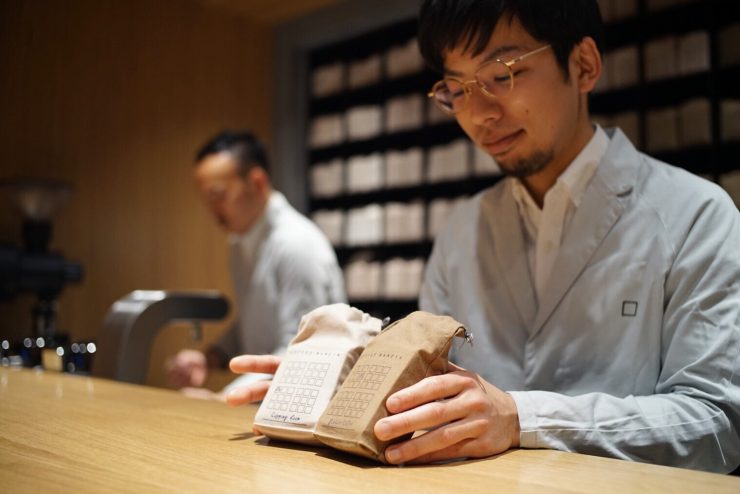
Now, with growing interest in specialty coffee, Kunitomo envisions Koffee Mameya as a select shop—a showcase of quality beans running the spectrum of dark to light—and a chance for anybody to discover a coffee to match their tastes, and the knowledge to brew it themselves.
“People like stories, and it’s stories that often make food and drink taste better,” says Kunitomo. “That’s what I want this shop to be, too—a collection of stories that we help tell through our interactions with customers, and the coffees we brew.”
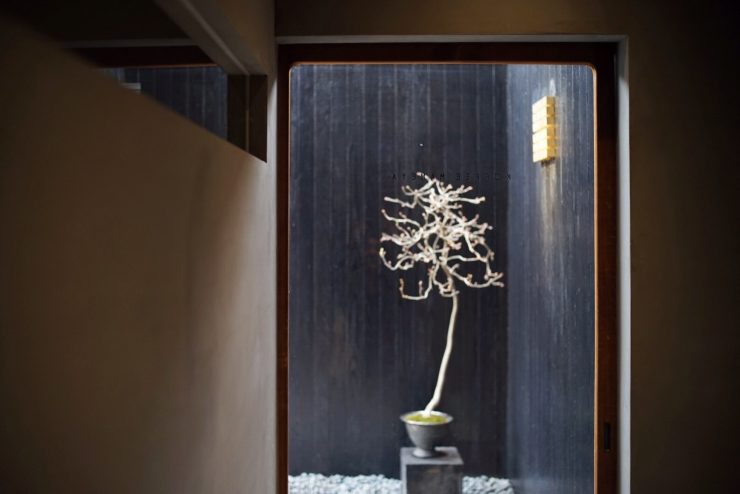
The story of Koffee Mameya itself is also one that enchants. It is a place that—much like its predecessor Omotesando Koffee—is a reflection of the building it makes home. Once regarded for an approach and aesthetic that leaned upon the traditional, it is reborn in a more contemporary style.
A style where the art is not just displayed, but also shared and taught.
Hengtee Lim (@Hent03) is a Sprudge.com staff writer based in Tokyo. Read more Hengtee Lim on Sprudge.
Photos courtesy of Sonia Cao.
















